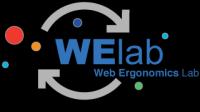,
Semantic Triage for Increased Accessibility
IBM Systems Journal, 44 (3): 637-648 (августа 2005)
DOI: http://dx.doi.org/10.1147/sj.443.0637
Аннотация
Visually impaired users are hindered in their efforts to access the largest repository of electronic information in the world, namely the World Wide Web. A visually impaired user's information and presentation requirements are different from those of a sighted user, in that they are highly individualized and nonvisual. These requirements can become problems in that the Web is visual-centric with regard to presentation as well as information order and layout. This can and does hinder users who need access to information but cannot take advantage of the visual cues available to sighted users. Our objective is to address these problems by creating usable and appropriately 'displayed' Web pages for all users who wish to understand the meaning of the information, as opposed to its presentation and order. We assert that the only way to accomplish this is to encode the semantic information of the page directly into the page. In this paper we describe work toward a low-overhead system to enable just this kind of semantic encoding. In particular, our approach allows semantics-based triage, that is, prioritized removal of unnecessary information from the presentation of a Web site, to make the interaction of visually impaired users with that site more productive.
тэги
- accessibility,
- centred
- human
- impaired,
- mobility,
- ontologies,
- sadie,
- semantic
- transcoding,
- visually
- web
- web,
